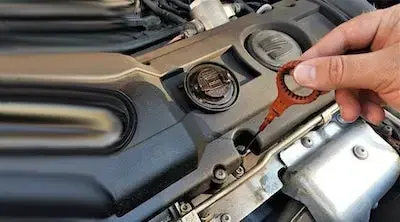
How to check your engine oil?
To ensure that your vehicle and the mechanical components that comprise it work properly, it’s essential to check your engine oil and change it regularly. Unsure how? In this guide, we provide all the steps you should follow to successfully check your oil level and change your engine lubricant.
Why do you need to check and top up your engine oil?
Oil ensures your engine is properly lubricated, allowing pistons to slide smoothly within their respective cylinders, hundreds of times per second. Without this lubrication, the friction between the metal parts would seriously damage the engine in just a few minutes.
Additionally, oil continuously releases impurities contained in the engine circuit. This means it eventually becomes loaded with too many micro-residues, altering its original physical properties, and impacting its viscosity and ultimately, its efficiency. In addition, oil is inevitably lost over time as high engine temperatures consistently burn off small amounts of oil – and as we know, less oil means less lubrication.
How to check and top off your engine
Due to the issues experienced by old or a lack of engine oil, it’s necessary to check your engine oil level at regular intervals to top it up when needed.
Before checking the oil level:
Make sure your engine is turned off and has been allowed to become cold to avoid the risk of burning yourself, and that your car is on level ground, to see the exact amount of oil remaining.

Open your vehicle’s hoodand then follow these steps:
- Pull on the dipstick ring until the dipstick is fully removed, and wipe it with a dry, clean cloth.
- Reinsert the dipstick fully, but without forcing it. If the dipstick gets stuck, remove it, wipe it again and repeat the operation, keeping the dipstick very straight.
- Once fully inserted, pull out the dipstick and check the oil level. To do this, look at the minimum and maximum marks on the dipstick. If the level is below the minimum mark, you need to top up the oil.
- Unscrew the oil filler cap, which is near the engine and the dipstick (an oil can is drawn on top of the plug).
- Gradually pour in the new oil.
- After each top up, check the oil level on the dipstick until you reach the maximum mark. Do not allow the oil level to go higher than this mark.
- Screw the cap back on the oil tank and reinsert the dipstick.

To be on the safe side, remember to check your oil level every 1,000 miles, and always before you go on particularly long trips. If the oil level warning light on your dashboard remains lit after topping up, you should contact a specialist.
